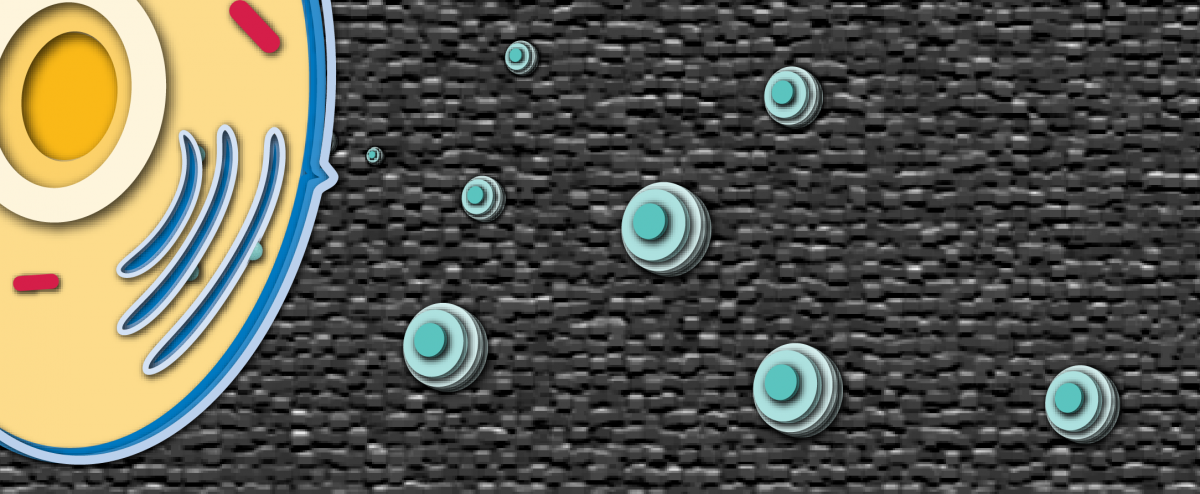ISEV 2019 Meeting Review
This year’s annual International Society for Extracellular Vesicles (ISEV) meeting was the first held in the Asia-Pacific region and attracted 1100 researchers from across the globe.
SBI was one of the exhibitors, and our exosome/extracellular vesicle (EV) scientists saw a number of exciting talks and posters. Here are a few we’d like to highlight.
Engineering EVs for therapeutics and diagnostics
One of the main themes of the meeting was the use of EVs in the therapeutic and diagnostic space. Given that EVs have the potential to serve as targeted drug delivery vehicles with a low immunogenic profile, there is a heightened interest in the development of methods that enable vesicle engineering. A few posters on this topic discussed novel targeting technologies by cell-mediated approaches such as cell extrusion [1], transfected scaffold protein-based fusion constructs [2], and direct manipulation of EVs by C1C2-based purified fusion proteins [3]. There were also interesting talks on packaging CRISPR/Cas9 machinery into EVs for genome editing in target cells [4,5].
New EV characterization methods
In addition to the emphasis on therapeutics and diagnostics, there were presentations on the latest advances in EV characterization technology. Some of the newest methods include interferometry [6,7], electrical impedence [8], Raman spectroscopy [9], and FTIR [10]. Improvements to existing technologies were also presented, notably in flow cytometry and imaging of EVs where enhanced detection and visualization methods address the need for better sensitivity.
The need for scientific rigor and experimental detail
With interest in the field continuing to rise, ISEV board members emphasized the importance of scientific rigor and recommend that EV isolation and characterization methods are communicated thoroughly and in detail. Given that there are several EV isolation technologies and no ‘one-size-fits-all’ method, they suggested that the choice of isolation technology be based on the specific downstream application, and whether yield or purity is the critical parameter. While ultracentrifugation is the most commonly used method for EV isolation, poor yield makes it incompatible with certain downstream applications that require high amounts of input sample. Newer isolation techniques such as size exclusion chromatography, tangential flow filtration, and acoustic trapping are emerging to circumvent the challenges faced by ultracentrifugation users.
Networking and sake
SBI hosted a networking reception on the first day of the meeting, which included a delightful local sake tasting for our EV researchers. Not only did the attendees get an opportunity to connect with each other in an informal setting, but they were also able to meet the SBI team. A big thank you to our customers who made it to the event!
In the end, we brought back with us a lot of new knowledge, many ideas for innovative products and fond memories from a yet another fantastic ISEV meeting. And some fancy chopsticks too.
References
- Severic M, et al. Targeting prostate cancer via PSMA-peptide decorated exosome mimetics. J Extracell Vesicles. 2019 Feb 8. 8(sup 1): 288.
- Dooley K, et al. Development of a platform for exosome engineering using a novel and selective scaffold protein for surface display. J Extracell Vesicles. 2019 Feb 8. 8(sup 1): 289.
- Bhardwaj P., et al. Surface engineering of exosomes to block HIV infection. J Extracell Vesicles. 2019 Feb 8. 8(sup 1): 98.
- Dekker N, et al. Engineered extracellular vesicles for drug delivery. J Extracell Vesicles. 2019 Feb 8. 8(sup 1): 48.
- McConnell R, et al. exoTOPE: loading bioactive molecules into exosomes using a shortpeptide fusion. J Extracell Vesicles. 2019 Feb 8. 8(sup 1): 278.
- Rojalina T, Carney R, and Lamb K. Biolayer interferometry – extracellular vesicles (BLIEV) platform for liquid biopsy of ovarian cancer. J Extracell Vesicles. 2019 Feb 8. 8(sup 1): 271.
- Ülnü SM, et al. Enhanced detection and visualization of exosomes with interferometric reflectance imaging. J Extracell Vesicles. 2019 Feb 8. 8(sup 1): 271.
- Zhang Y, et al. Characterization of exosomes-based on their unique dielectric properties by a novel electrical impedance measurement system. J Extracell Vesicles. 2019 Feb 8. 8(sup 1): 273.
- Carney R, Rojalin T, Hogiu SW. Hybrid plasmonic biomaterial nanofilter scaffold for cancer EV diagnostics based on surface-enhanced Raman scattering (SERS). J Extracell Vesicles. 2019 Feb 8. 8(sup 1): 329.
- Visnovitz T, et al. A 96 well plate format lipid quantification assay with improved sensitivity for standardization of experiments with extracellular vesicles. J Extracell Vesicles. 2019 Feb 8. 8(sup 1): 272.


